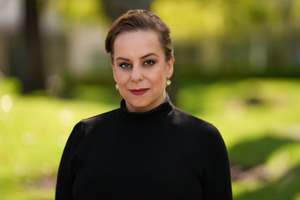
Change one letter in the acronym and it would be the definition of stupid, but Vodafone evidently sees nothing idiotic in the use of MORAN technology. Today, it proudly drew attention to its status as the first UK operator to introduce it in its 5G network. Others, by implication, will follow.
Just what is MORAN, and why has it popped up now? The acronym stands for multi-operator radio access network, and it essentially provides a way for operators to share the same basestations instead of building them out separately. Cue a radical step into so-called "active" network sharing and reliance by two or more operators on the same 5G basestation vendor.
As dramatic as this all sounds, it has been on the cards since last year, when Vodafone and O2, its Telefónica-owned UK rival and network-sharing partner, said they would share active 5G equipment outside busy urban areas. Previously, the companies have shared active 4G equipment across the UK. When it comes to 5G, they plan to roll out separate radio equipment in London and other traffic hotspots while relying on the same gear in other parts of the country.
Active network sharing holds obvious cost-saving attractions these days. Deploying nationwide 5G networks is likely to be an expensive business, and there is little optimism that 5G services will buoy telco revenues. Vodafone's net debt has already ballooned from €32.1 billion ($35.7 billion) in September 2018 to €48.1 billion ($53.5 billion) a year later because of takeover activity and spending on 5G spectrum licenses. By March, when the current fiscal year ends, Vodafone expects net debt to be around three times its adjusted annual earnings. It is under shareholder pressure to bring the figure down.
Telefónica is similarly trying to improve the look of its balance sheet. Its own net debt equaled about €38.3 billion ($42.6 billion) last September, roughly 2.5 times its operating income last year, and reported sales grew less than 2% year-on-year in the first nine months of 2018. In a restructuring plan unveiled in November, Telefónica said it would spin off towers and other infrastructure assets, partly to foster network-sharing agreements. Vodafone is pursuing the same type of scheme.
In recent years, numerous operators have plunged into "passive" network sharing, which entails using the same infrastructure sites but not the same electronic gear. Active sharing obviously goes much further, and not everyone is persuaded it makes long-term strategic sense.
For starters, differentiating services on the usual basis of connection speed and quality would seem to be much harder if companies are using the same network elements. Decisions about vendors and upgrades would have to be taken jointly, unless one partner cedes control. From a regulatory perspective, too, active network sharing could smack of less competition. That said, UK operators do not appear to have any plans for spectrum sharing, giving them more scope for network service differentiation than operators that are also pooling their frequency resources.
Want to know more about 5G? Check out our dedicated 5G content channel here on
Light Reading.
Active sharing seems unlikely to be welcomed by equipment vendors, though. In areas where Vodafone and O2 continue to operate separate radio equipment, there are two prospective basestation deals for the likes of Ericsson, Huawei and Nokia. Where equipment is shared, just one contract is on offer. If active sharing becomes pervasive, it could make telcos even more heavily reliant on a tiny number of giant vendors -- a worrying development for regulators and operators concerned about the current lack of supplier diversity.
Nevertheless, from the vendor's point of view, active sharing is clearly better than no 5G investment. For this reason, Ericsson has played down the impact of major active sharing deals, such as last year's high-profile tie-up between China Telecom and China Unicom. "Sometimes one strong player is better than two weak ones," said Fredrik Jejdling, Ericsson's networks chief, during an interview with Light Reading last year.
Beyond these considerations, Vodafone reckons MORAN technology should help to reduce energy consumption as well as the overall number of masts that are needed in the UK's 5G market. That will appeal to policymakers and climate-change activists who want to see the telecom industry do more to limit its impact on the environment. Eager to show willing, Vodafone is already making some unconventional moves into biomethane, which uses gases from sewage and other waste products instead of more harmful (but less smelly) emissions. "You put it into a converter unit, and it will power a site in Birmingham," said Scott Petty, Vodafone UK's chief technology officer, at a recent dinner.
5G century
Vodafone also took the opportunity today to boast that its 5G service is now available in more than 100 locations and that it can now offer 5G service roaming between the UK and Ireland.
Related posts:
— Iain Morris, International Editor, Light Reading
Read more about:
EuropeAbout the Author(s)
You May Also Like












